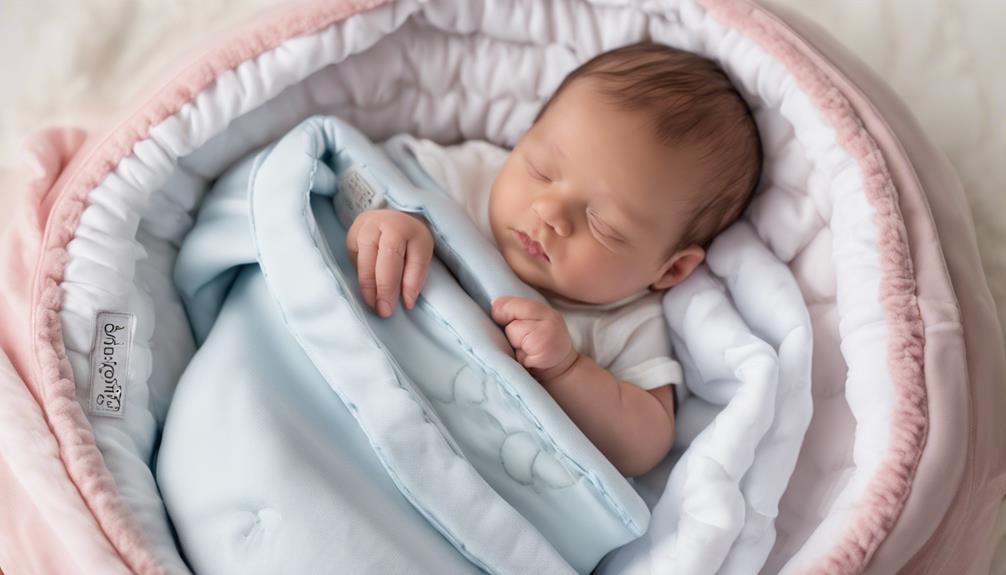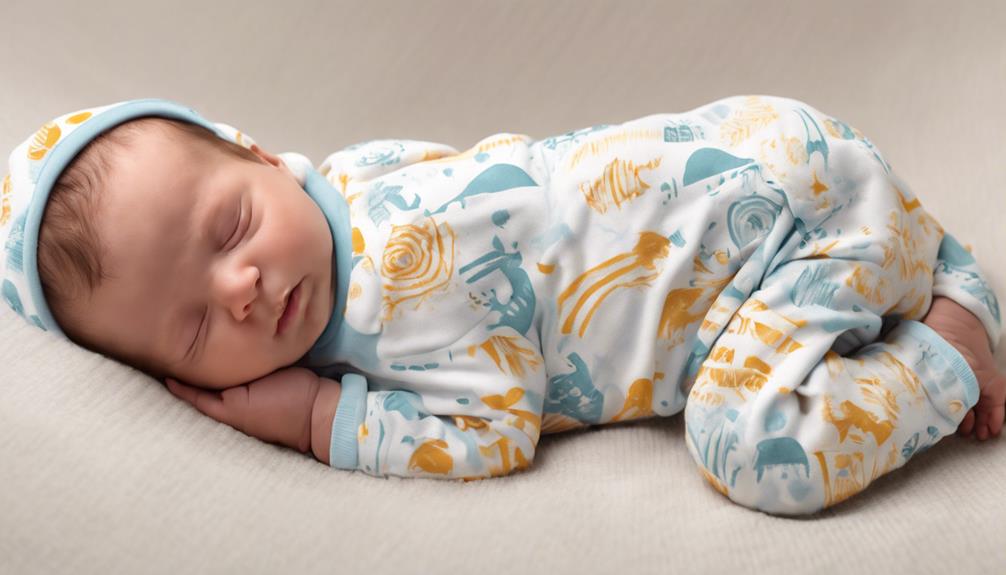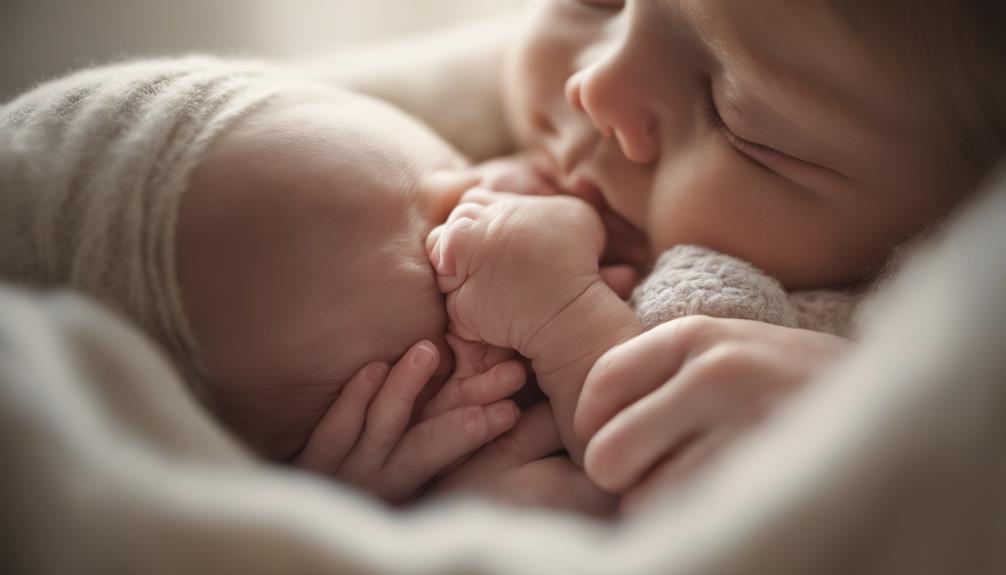As we carefully cradle our little ones in our arms, we aim to protect them from any harm that may come their way.
Imagine a tiny boat steering through rough waters, seeking the safest path to reach its destination.
Just like guiding that boat, we must steer the delicate balance of a newborn wanting to sleep on their side while ensuring their safety.
But what if there was a way to satisfy their preference while keeping them secure?
Join us as we uncover practical tips and strategies to help your newborn sleep safely on their side, ensuring peace of mind for both you and your little sailor.
Key Takeaways
- Back sleeping is safest for newborns to prevent SIDS.
- Monitor and guide babies onto their backs if they prefer side-sleeping.
- Establish a consistent routine to encourage safe back sleeping habits.
- Avoid loose bedding and ensure a safe sleep environment for newborns.
Side-Sleeping Safety Tips for Newborns
Side-sleeping for newborns poses significant risks and isn't recommended by medical experts due to the increased risk of SIDS. While it may seem like a cozy position, it can be dangerous for babies. Newborns lack the ability to adjust themselves if they find it hard to breathe in this position.
Placing your baby on their back for sleep is the safest way to reduce the risk of breathing problems and SIDS. Sometimes babies might prefer side-sleeping, but it's important to gently roll them onto their backs for their safety. This simple adjustment can make a significant difference in preventing potential harm.
Understanding Newborn Side-Sleeping Preferences
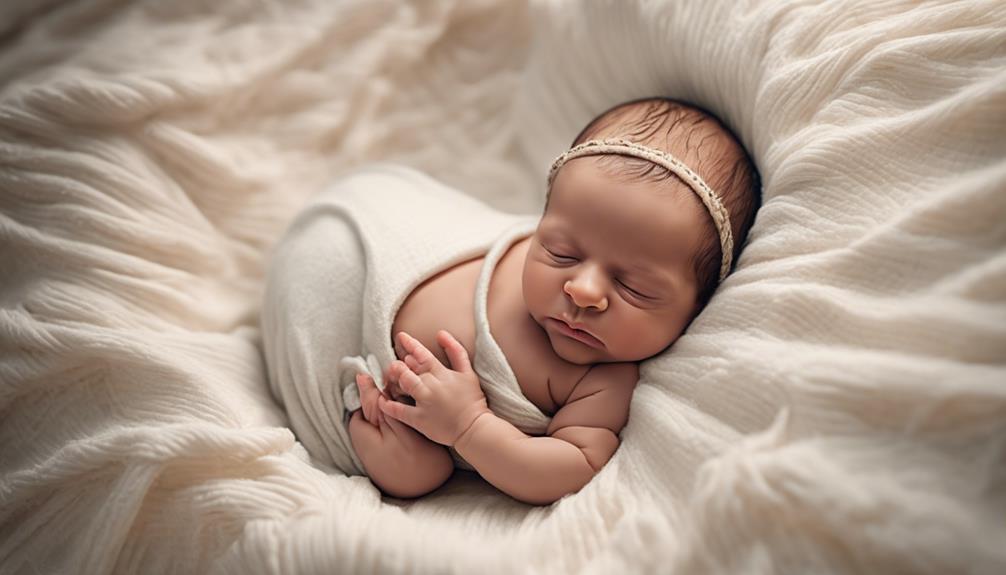
While newborns may naturally gravitate towards certain sleeping positions, it's important to understand the reasons behind their preferences, especially when it comes to side-sleeping. Babies' comfort and developmental stages can influence their sleeping choices. Here are some factors to take into account when understanding newborn side-sleeping preferences:
- Newborn side-sleeping preferences may arise due to comfort or seeking a different position.
- Babies may show a preference for side sleeping as their neck muscles strengthen.
- Side-sleeping can be a phase as babies explore different sleeping positions.
- It's important to change babies for safe sleeping on their backs to reduce SIDS risk.
- While some babies may prefer side sleeping, back sleeping remains the safest position for newborns.
Understanding why newborns prefer side-sleeping can help caregivers create a safe sleep environment that supports the baby's needs while prioritizing their well-being.
Risks of Side-Sleeping for Newborns
Sleeping on the side poses significant risks to newborns, particularly in relation to Sudden Infant Death Syndrome (SIDS). Side sleeping increases the risk of SIDS as newborns may lack the strength to move out of a side sleeping position on their own. This position can also lead to accidental rolling onto the stomach, which poses suffocation risks.
It's safer for newborns to sleep on their backs to prevent potential breathing difficulties. Side sleeping should be avoided until newborns demonstrate the ability to move and lift their heads independently. By following safe sleeping guidelines and placing newborns on their backs, parents and caregivers can diminish the risk of SIDS and guarantee a safer sleep environment for their little ones.
Creating a Safe Sleep Environment

To establish a secure sleeping environment for newborns, prioritize a firm mattress and fitted sheet in the crib to reduce suffocation risks.
Here are some key points to create a safe sleep environment:
- Avoid Loose Bedding: Steer clear of blankets, pillows, and stuffed animals in the crib to prevent potential hazards.
- Choose the Right Mattress: Opt for a firm mattress to provide a stable surface for your baby to sleep on.
- Back for Sleep: Always position your baby on their back for sleep to minimize the risk of SIDS.
- Monitor Sleeping Position: Keep an eye on your baby's sleeping position and gently guide them back onto their back if they roll onto their side until they can change positions on their own.
- Remove Obstructions: Make sure the sleep environment is free of soft items that could obstruct your baby's airways while they sleep.
Transitioning to Back Sleeping
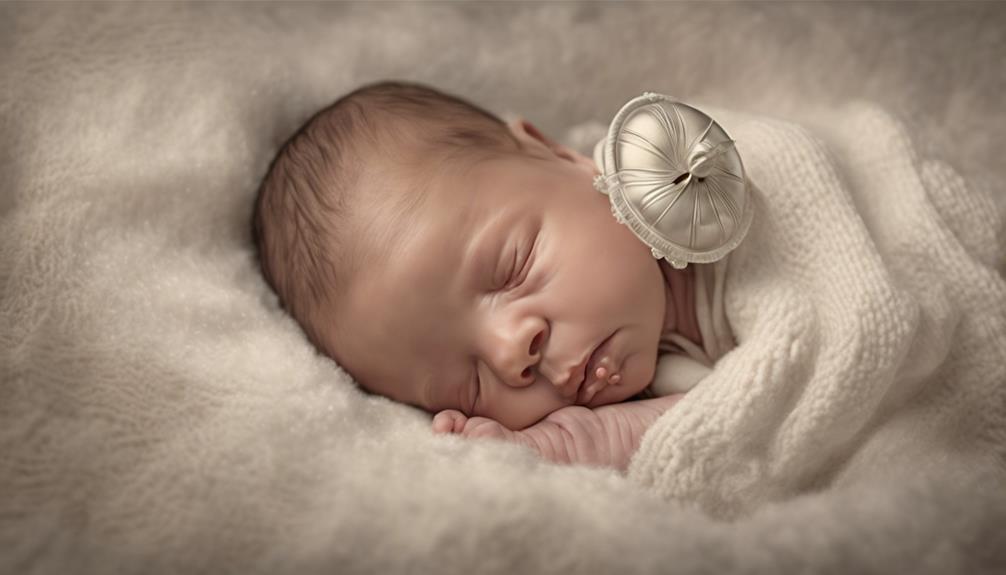
Establishing a safe sleep routine is paramount for newborns, ensuring they're positioned on their back to reduce the risk of SIDS and other potential hazards. Shifting to back sleeping is important for newborn safety, as it's the recommended position by medical experts to minimize the SIDS risk.
Consistency in back sleeping practice helps newborns establish safe sleep habits early on. Monitoring the baby's position and gently adjusting them onto their back if they roll onto their side, promotes safe sleep practices.
Creating a safe sleep environment with a firm mattress and no loose bedding further encourages back sleeping for newborns. By prioritizing these safe sleep habits and maintaining a secure sleep environment, parents can support their newborns in making the switch to back sleeping successfully, promoting their well-being and reducing the risks associated with alternative sleeping positions.
Conclusion
In the dance of safe sleep, we must lead the way.
Guiding our newborns back to their backs, we sway.
Side-sleeping may tempt, but the risks we can't neglect.
A safe sleep environment is what we adore.
Let's make certain our little ones rest in peace, on their backs, where SIDS risks decrease.
So let's always recall, back is best, for a peaceful slumber and a safe rest.



